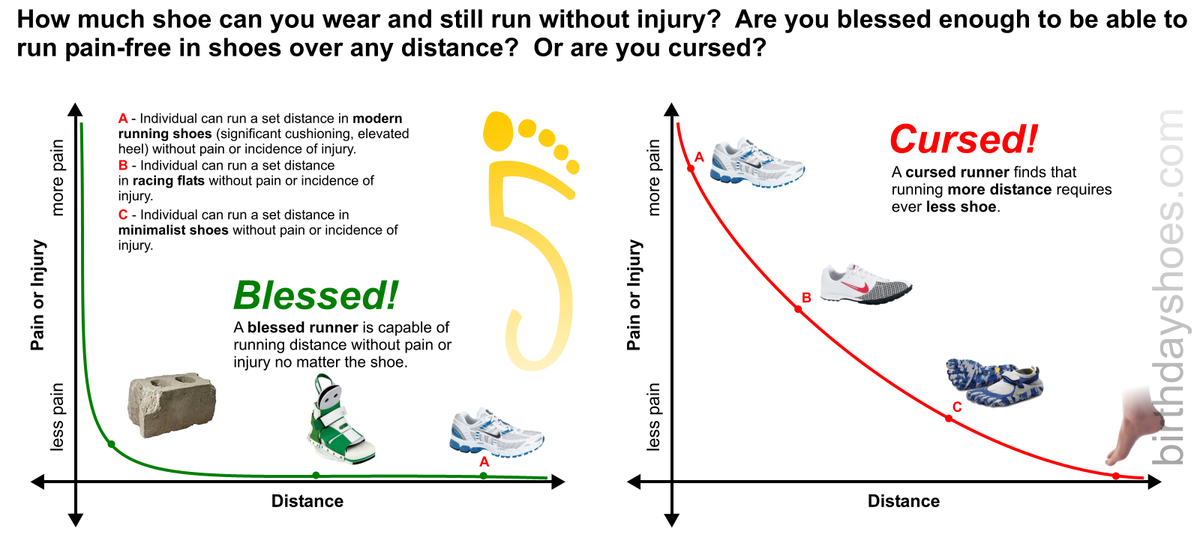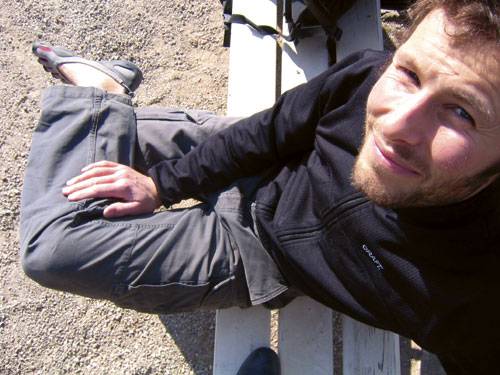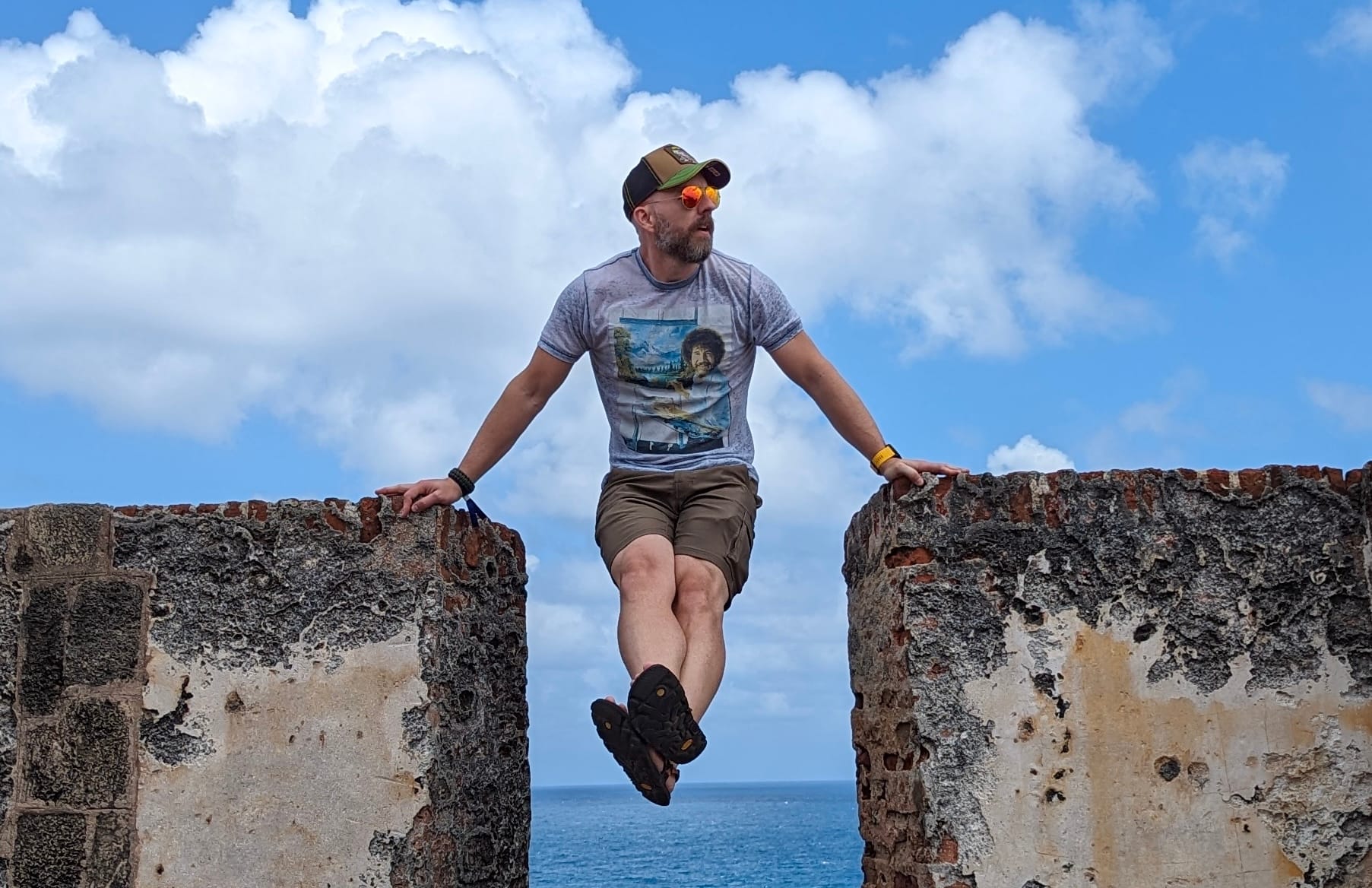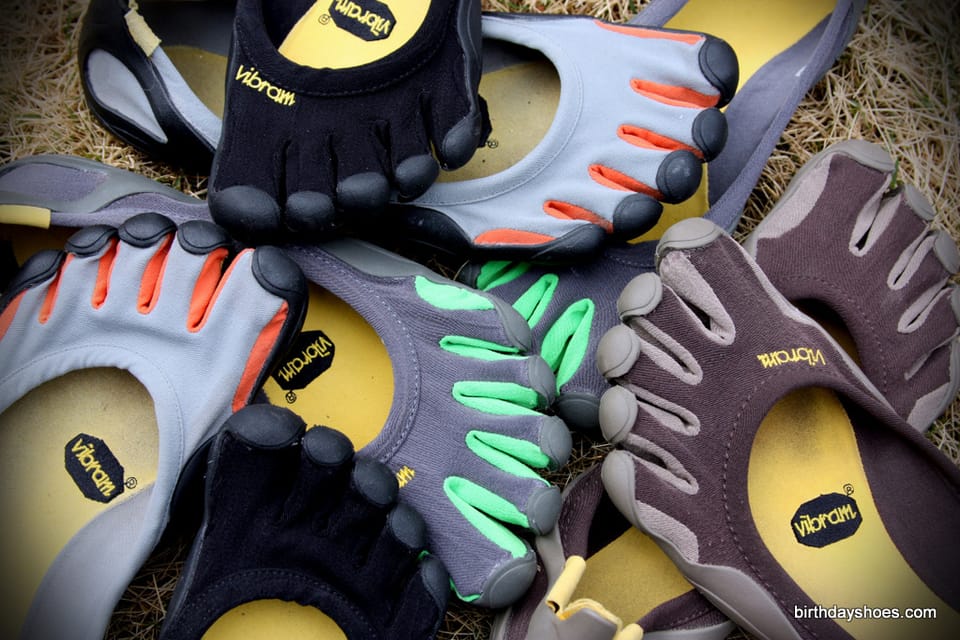How much Shoe can you Tolerate? Are you Blessed enough to Run Pain- or Injury-Free in Shoes?
A visual depiction and discussion of how running without pain or injury correlates to distance, and how one's ability to run distance without pain in different shoes can make you a blessed runner biomechanically or a cursed runner.

Today, I want to talk about the spectrum of runners as it pertains to the ability to run distances in shoes of varying sorts as mapped against one's tendency to experience pain or injury. Indeed, that is exactly what is mapped in the two graphs above — albeit somewhat tongue in cheek.
It is my opinion that the majority of human beings can run only a small distance in modern running shoes and not experience pain or injury. Ramp up the distance, and this majority will soon be in pain and experience a great occurrence of injury. I'd even go so far as to say that many people — a silent majority — have forsworn running because they associate it with pain.
Let me recap the gist of what I'm mapping in the graph
- The amount of shoe directly affects one's sensation of impact as well as the proprioceptive ability of the foot.
- As impact forces are absorbed by the shoe (rather than the foot) and ground-feedback is subdued, a runner's incentive to land gently is reduced (minimizing impact being perhaps the key to natural running).
Basically, the more shoe you add to the foot, the less you monitor impact forces on the body. These changes ultimately manifest themselves as pain or injury — moreso as you increase distance.
Many minimalist or barefoot runners have already concluded something like what I'm saying here, and this post is not intended to be a slam on modern running shoes.
Okay, so why are you preaching to the choir?
I'm writing this post not because you can be a cursed runner in modern running shoes but because you can also be "cursed" in minimalist shoes like Vibram Five Fingers, too.
I am a cursed runner. Slap your typical running shoe on my foot and within a quarter of a mile my knees will start aching. I am in no way out of shape or overweight at 5'11" and 165 lbs. I'm just incapable of running gently in cushioned shoes without experiencing pain. I'm sure many of you can relate!
Unfortunately for me, it doesn't stop there. I'm so cursed, it seems, that even in my favorite shoes of all time (you know, Vibram Five Fingers), I still find that running past a certain distance (not much further at that!), my knees start acting up. Bummer, right?
It seems that I'm so cursed that I have to be actually barefoot if I want to run more than a mile or two. Don't get me wrong: my Vibram Five Fingers are eons better at enabling me to run gently as compared to my old, dust-gathering Nikes, but I just haven't dialed in my form enough to run much distance in them without pain. Case in point, just the other day my knee started acting up after about a mile run (the jogging stroller probably didn't help my form). So I took off my Vibram Five Fingers* and continued on barefoot for another mile and my knee shut up!
So for me at least, it seems that I actually need to be barefoot in order to get enough ground feedback to force me to run lightly — at least, for now. I bring up the blessed/cursed runners spectrum because I think it's important to realize that as great as Vibram Five Fingers are, they still turn the volume down on ground feedback. And if you're like me — really cursed — you may need to ditch your Vibrams until such a time as you've retrained your muscle memory, rebuilt your muscles and bones, and relearned how to land gently (Something I distinctly remember being able to do as a very barefoot kid up until the age of seven or eight).
Remember: Running shouldn't cause you pain or injury!
Vibram Five Fingers are amazing in just how well they strike a balance between being shod and protected and getting the dynamic benefits of letting your feet be free — barefoot. That said, they do not provide the equivalent experience to being barefoot. They are the "barefoot alternative" — so if you're new to the scene of minimalist running, consider just how blessed or just how cursed you may be and remember: running isn't supposed to hurt!
- Mocs. Yes, I took them outdoors! Don't tell Vibram! And no I don't recommend doing this if you want your Mocs to last!




